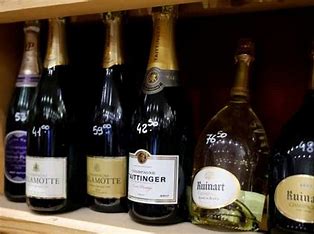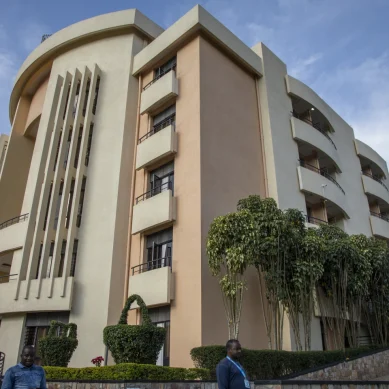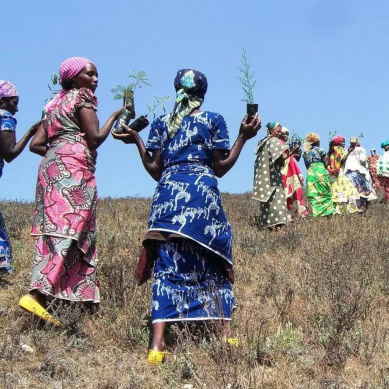
A cork shipment delay may not sound like a big deal in the wine industry, but it’s critical for smaller wineries that don’t do their own bottling. They must hire a mobile bottler who shows up with a big truck, into which they pump the wine so it can get dispensed into bottles.
These wineries have to supply their own bottles and corks – and have them ready on the right day.
Cork Supply USA vice president Greg Hirson, explains,“You make that date for the mobile bottler six, eight, 10 months ahead of when you’re planning to bottle. So if your supplies aren’t there on your day of bottling, and the bottler is scheduled for the next 10 months, there’s no ‘Come back tomorrow when my stuff gets here.’”
There are alternatives to cork stoppers, in the form of tin or aluminium screw caps, which aren’t as sensitive to the whims of nature. But they are sensitive to war: Russia produces much of that aluminium, which also is used to make the protective “foil” capsules you peel off before uncorking. So in addition to disrupting the supply of energy used to produce glass, Russia’s invasion of Ukraine has also held up the supply of wine-bottle tops. “We’ve had a lot of wineries who haven’t been able to sell their product through to their end user because they ran out of capsules,” says Lambert.
And that’s to say nothing of the wine itself. Grapes are highly susceptible to changes in temperature—that’s partially why zinfandels grown in different parts of the world can taste so different. Sustained, extreme heat is terrible for grapes. “The plant will often shut down and have sometimes severe impacts on the ability to photosynthesize and make sugar, and even grow,” says Elisabeth Forrestel, an assistant professor at UC Davis who studies the effect of climate on grapes. “Heat waves also cause the degradation of really important phenolic compounds related to color in the wine and flavor profile.”
Cherished French wines, then, are at the mercy of an increasingly hot and erratic climate. “As soon as you get to the temperatures that we saw in France for a sustained period in June, July, and August—46, 47, 48 [degrees Celsius]—the vines themselves can’t really cope with it,” says Lambert. “Temperatures were dropping down to 32 to 28 overnight, so the vines were able to recover from the daytime temperatures, but it seriously affects the quality.”
The shock is even worse if the plant is also struggling with a lack of water, since a grapevine releases water vapor to cool itself. While a drought-stricken vine can still produce high-quality berries, less water means less growth, reducing the eventual yield of those berries. In parched Bordeaux, Lambert says, harvests are down 50 per cent.
“Compound that with glass, compound that with the price of corks and capsules all going up,” says Lambert. “You’re seeing inflation in every type of raw material going into the production of a bottle of wine.”
All of this is bad news – for wine producers facing lower yields and higher material prices, and for their customers, who still expect to pay roughly what they did last year. “Wine is a finite production. There might be a lot of it, but it is not Pepsi Cola,” says Lambert.
How much a winemaker raises prices depends on their particular circumstances. “Generally, the wine traders and industry hate increasing prices,” says Lambert. “If you go from an £8.99 price point to a £10.99 price point, you could drop your sales by 50 percent.” Yet Lambert expects an increase in shelf prices in the UK of between £1.50 and £2.25 per bottle. Brexit also makes importing wine more difficult, helping send prices higher. “Brexit is the cherry on top, which is an unnecessary burden,” says Lambert. “That’s where the UK is shooting itself not just in both feet, but in both arms as well.”
Despite this chaos, the industry is adapting. Winemakers like Trefethen Family Vineyards are experimenting with how to better grow grapes as the Napa Valley’s climate transforms. The industry as a whole is investing heavily in research into how it might protect grapevines from increasingly severe droughts and heat waves, says Forrestel, who researches how to prevent water stress in the plants.
She thinks it’s a chance for the traditionally rigid winemaking world to express more willingness – or face the outright necessity – of experimenting.
“It’s an opportunity for being innovative and trying new things. And for, hopefully, consumers and others to be receptive to new things and new styles – to try new varieties, to try blending, to not focus so much on one cultivar,” she says. This could help ease demand for the grapes that are most under climate stress and boost the market for ones that are better adapted.
Meanwhile, cork companies are considering moving more production from south to north Portugal in search of water, says Hirson. And Ruel says Trefethen is diversifying its delivery methods to avoid some of the glass bottle supply problems. It is sending reusable kegs to restaurants, which bartenders can use to pour wine by the glass, then return to the winery for a refill.
After all, you don’t have to see a nice chardonnay through an increasingly-difficult-to-procure clear bottle to enjoy it.
Ruel points out that an industry as old as winemaking has already weathered millennia of constant change and is prepared to keep adapting. “In the history of our craft, I’m reminded that it goes back thousands of years,” says Ruel. “Wine has been through recessions and pandemics before we even had words for recession and pandemic.”
- A Wired report











